The weekend was happy for us, because a number of readers left word of health improvements.
Raynaud’s Syndrome, Constipation, and Other Problems Relieved
Becky reported that her Raynaud’s was better:
Hat tip and thank you: After I started reading your blog, and adding in “safe starches”, my Reynaud’s largely cleared up with temperatures over 20F. This wasn’t the intention, but a wonderful side-effect. Last month, when the sun came out and the temps got over 25, I enjoyed a successful 2-mile snow hike for the first time in three years. =)
Kate reported the same:
I too have had Raynaud’s all my life … In the past two months, I have modified my diet in line with Paul’s suggestions for Migraine. I now eat 200 calories worth of safe starch, all the recommended supplements, and as much coconut oil as I can stomach. I am also doing the 16/8 fast. My Raynaud’s has further improved, as measured by the fact I sometimes forget to turn the heat up in the morning, and cold extremities don’t always alert me to my forgetfulness!
Bill, who last October reported a variety of health complaints which persisted after he adopted a Primal Diet in May 2009, has experienced a big improvement:
I definitely feel 100% better with a more appropriate caloric intake and some starch.
Betty reported her constipation was gone:
You have blessed my life. I had one final symptom that was chronic all my life. Constipation. I e-mailed you last week and you offered up some suggestions. PRAISE THE LORD! I have had NO IBS, or constipation since following your advice. I am, and will be forever grateful.
I’ll discuss my constipation advice in Thursday’s post. Today I want to discuss migraines.
Migraines
You may recall that reader Rob Sacks cured his migraines through ketogenic dieting. I asked Kate if her migraines had responded. Here was her reply:
Thanks for asking about the Migraines. They are in fact vastly improved, which I attribute solely to your recommendations. I can say that, because I have tried virtually everything else in the past.
Kate sent me a full account of her experiences by email. It is fascinating and she has given me permission to share it. The next section was written entirely by Kate.
Kate’s Story
Thanks for asking about the migraines. They are in fact vastly improved! Since they have been so intractable in the past, I guess I was waiting to make sure the effect was stable before I reported my results. But clearly something remarkable is happening, thanks to your recommendations!
A little history. I started getting these headaches in my late 30s. (I am now 52). In the beginning I thought I had the stomach flu, because in addition to the headache I would always throw up or have dry heaves. The worst headaches would keep me immobilized in bed for up to two days. My brother-in-law, a neurologist, convinced me they were migraines. I finally consulted a doctor, who put me on midrin, which did not help, and a few months later I started on imitrex, which did help, at least at first. Eventually, my headache pattern evolved, and I had at least a mild headache every day, punctuated by the occasional doozy. Apparently, this is a pretty common progression, especially with women my age. I always suspected there was something wrong with my lifestyle or diet, and over the years I have tried numerous experiments, but nothing ever worked. Here is a summary of what I have tried, more or less in order. Unless noted, these were all for three months.
| What I tried | The inspiration | The results |
| Chelated Magnesium and riboflavin | Mauskop’s book What Your Doctor May Not Tell Your about Migraines | nada |
| Expensive German butterbur preparation | Magnum website (www.migraine.org) | nada |
| Forever Well Gut Brain Therapy (a mix of probiotics, peptides, and a state of the art supplement to support the organs of elimination) | Magnum website | I think I slept a little better. No help with headaches. Was surprised that the president of the company called me to see if the supplements were helping |
| Amitriptyline, a tricyclic anti depressant—my first foray into pharmaceutical prophylactics | My doctor insisted I consult a neurologist | Tried for 4 months. Slept like a zombie, and acted like one. No help with headaches. |
| 45 minutes of low intensity aerobics 6 days a week | Inspired by Crowley and Lodge’s Younger Next Year—Never mind I had been exercising regularly all my life. | Got a heart rate monitor and got after it. No help for headaches. |
| No caffeine, alcohol, triptans, or over the counter analgesics | Buchholz Heal Your Headache. I love my coffee, so this was a big step for me. | Did this for four months. Very sleepy for first few days. Did NOT help with headaches. However, I felt I could rule out medicine overuse headaches. |
| Cerapamil—A calcium channel blocker | My primary care manager thought it would be worth a try. | Tried for four months, and upped dose after a few weeks. Extreme constipation and painful cramps. No help with headaches. |
| Low carb diet | Found a reference to a german website of someone who had cured his headaches with a low carb diet. I had always though low carb diets were ridiculous, but decided to give it a try | Immediate improvement within a few days! Also cured insomnia and acid stomach within a week. Headaches were less severe by about 50%. Frequency was unchanged however. Remained on low carb diet and manipulated the variables, but did not find further headache improvement. |
| Vitex | Always felt there was a hormonal connection | nada |
| Natural progesterone cream | Same | Didn’t help my headaches, but did weird things to my period |
| Nortriptyline–another tricyclic antidepressant | My brother-in-law, a neurologist thought I should try it. | Did seem to help a little. Had to stop in less than a month because it gave me high blood pressure. |
| Birth Control-Yaz | PCM sent me to gynecologist for heavy menstrual bleeding. Benign fibroids found. Doc was sure Yaz (without placebo pills) would help heavy bleeding and headaches. I didn’t care about the bleeding, but I rose to the headache relief bait. | Tried for five months. Spotted every day, but got no headache relief. |
| Inderal-a beta blocker | Neurologist | Seemed to help, but my blood pressure went too low. |
| Fish oil, vitamin D, coenzyme Q10, and various other supplements | Grasping at straws | Tried these at various times. No noticeable effects |
| Acupuncture | same | No noticeable effects, but I didn’t really believe |
| Self analysis, meditation | Sarno The Mind Body Prescription | I think there is something to this, but no headache relief for me. Do feel more at peace with myself. |
| Topamax-epilepsy drug | Neurologist | Low dose did not help. Worked up to 100mg over four months. Did not help headaches. Gave me extreme anxiety about driving on limited access roads. I didn’t notice the connection, but my college age daughter did. I immediately tapered off. |
Got off the Topamax last summer, and forswore further pharmaceutical prophylactics at that point. In the meantime I stumbled upon the profusion of “primal” material that is now out. I had not read any low carb stuff for a couple years, and I enjoyed reading Sisson, Wolf, Cordain, et al. I started eating more saturated fat. I also read Fallon’s Nourishing Traditions, and started eating liver again, which I had loved as a child. Her book inspired me to order some kelp tablets for iodine, and I took one here and there when I thought of it. In January, in my blog travels, I stumbled on your site. I ordered the book and was intrigued by your and Shou-Ching’s ideas about disease and chronic conditions. I was already familiar with the idea of a ketogenic diet for epilepsy, so I was immediately interested in trying a more ketogenic diet for myself.
I ordered all your basic supplements, and immediately upped my kelp to two capsules. I had been using coconut oil for curries, so I started using it habitually. Started eating 200 calories of starches that you recommended—this was a little scary, after studiously avoiding them for four years! I was afraid I they might keep me awake at night, but I am sleeping like a log. Started fasting 16/8, which was easy once you absolved me for having cream in my morning coffee!
Within a week of starting this regimen my chronic headache started to disappear! Some days I would only have a headache for part of the day, and occasionally I would have no headache at all! I read somewhere on your site that NAC is good on a ketogenic diet, so I ordered it too. I had never heard of this supplement before. It seems to have made a further positive difference. I have started taking it twice a day. Once before bed, and once in the late afternoon, when the headache sometimes starts coming back. Since I added NAC, I have been nearly headache free.
Another amazing development concerns anxiety. Over the years I have become somewhat anxious when I drive on highways. I grip the steering wheel tightly, sit forward in the seat, and am generally hyper vigilant. I always chided myself for my lack of nerves, but that didn’t help. As mentioned above, this was magnified by the Topomax. I never had this issue when I was younger; indeed I used to fly helicopters in the army. Two weeks ago I drove up to New Jersey to pick up my daughter, a 3.5 hour trip from where I live in Northern Virginia. I stopped two hours into the trip to make a pit stop, and I suddenly realized I was totally relaxed, and had been for the entire trip! The PHD is strong brain medicine indeed!
Thanks for all your research, insights, and ideas. I think the Perfect Health Diet is going to be a game changer for many people. Hopefully it is the start of a sea change at how we approach the chronic maladies of our times.
Mechanisms
Thank you, Kate! That’s a fantastic chronicle of your history.
This is already a long blog post, so I won’t go into an analysis of why and how the ketogenic variant of the Perfect Health Diet can cure migraines, reduce anxiety, and improve sleep. I’ll only add a few things.
First, there is a case report in the literature of a ketogenic diet helping migraines. [1]
Second, the diet helps in part by getting around mitochondrial dysfunction. Some other nutritional supplements that support mitochondrial function have a chance to help:
- carnitine [2]
- riboflavin [3,5]
- CoQ10 [4,5]
- alpha lipoic acid [4]
- magnesium [4, 5]
I realize that you’ve already tried those, Kate, and didn’t notice an effect, but you may notice a benefit now that your diet is better. If in the past they reduced headache severity from 100% to 99%, you wouldn’t have noticed a change. If now they reduce severity from 2% to 1%, or 1% to 0%, the improvement might be obvious. So you might re-consider them now.
Finally, in the interests of full disclosure I should note that some doctors expect improvements from diet and nutrition to be short-lived: “high-dose vitamin and cofactor treatment and, where applicable, high-fat diet, are well tolerated and possibly effective in the short term, but ineffective in the longer term” against mitochondrial disorders. [6]
I believe that fading benefits are likely a result of eating the wrong diet, and that on the ketogenic version of the Perfect Health Diet the good effects will prove permanent. But time will tell.
Conclusion
We believe that diseases are generally caused by food toxins, malnutrition, and pathogens. The Four Steps of the Perfect Health Diet eliminate food toxins, optimize nutrition, and enhance immunity; therefore they remove most of the causes of disease and should render most diseases curable.
But we had no idea, last October when our book was released, which cures would appear first.
It’s interesting that migraines are appearing so early as a curable disease. I think this says a lot about the discipline, and eagerness for a cure, of Rob and Kate. Rob was willing to fast for 30 days (!); Kate read the book in January and was able immediately to make substantial diet, lifestyle, and supplement changes.
It seems that a painful but non-debilitating disease will create the most dedicated, venturesome patients.
I’m very grateful to Kate for trying the diet and sharing her story. Hopefully we can bring the good news to others, and gather more evidence to prove that diet is the best therapy – for migraines, and for many other diseases as well.
References
[1] Strahlman RS. Can ketosis help migraine sufferers? A case report. Headache. 2006 Jan;46(1):182. http://pmid.us/16412174.
[2] Kabbouche MA et al. Carnitine palmityltransferase II (CPT2) deficiency and migraine headache: two case reports. Headache. 2003 May;43(5):490-5. http://pmid.us/12752755.
[3] Triggs WJ et al. Neuropsychiatric manifestations of defect in mitochondrial beta oxidation response to riboflavin. J Neurol Neurosurg Psychiatry. 1992 Mar;55(3):209-11. http://pmid.us/1564483.
[4] Sun-Edelstein C, Mauskop A. Foods and supplements in the management of migraine headaches. Clin J Pain. 2009 Jun;25(5):446-52. http://pmid.us/19454881.
[5] Taylor FR. Nutraceuticals and headache: the biological basis. Headache. 2011 Mar;51(3):484-501. http://pmid.us/21352223.
[6] Panetta J et al. Effect of high-dose vitamins, coenzyme Q and high-fat diet in paediatric patients with mitochondrial diseases. J Inherit Metab Dis. 2004;27(4):487-98. http://pmid.us/15303006.







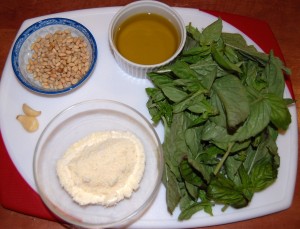
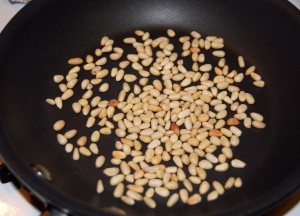
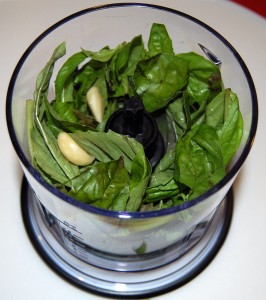
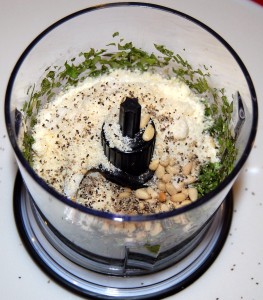
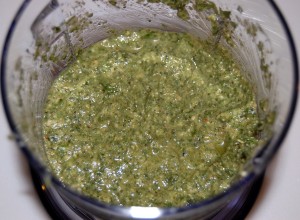
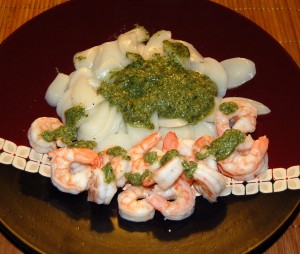
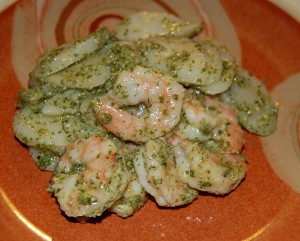
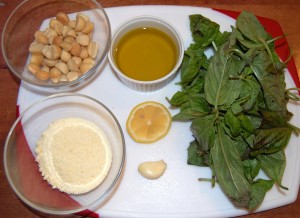
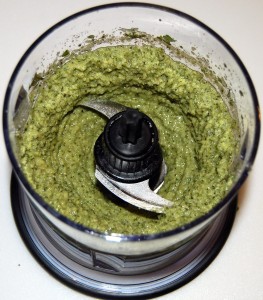
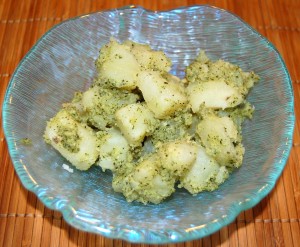







Recent Comments